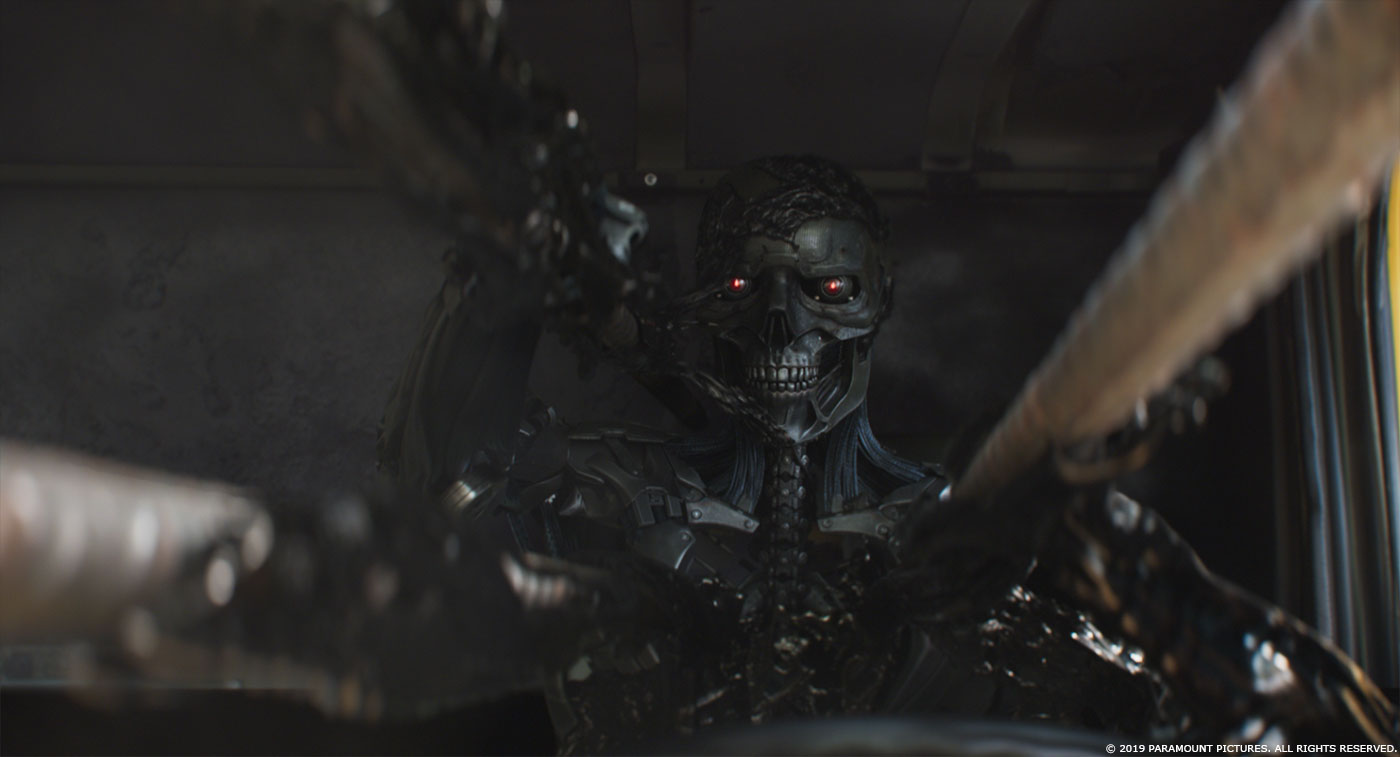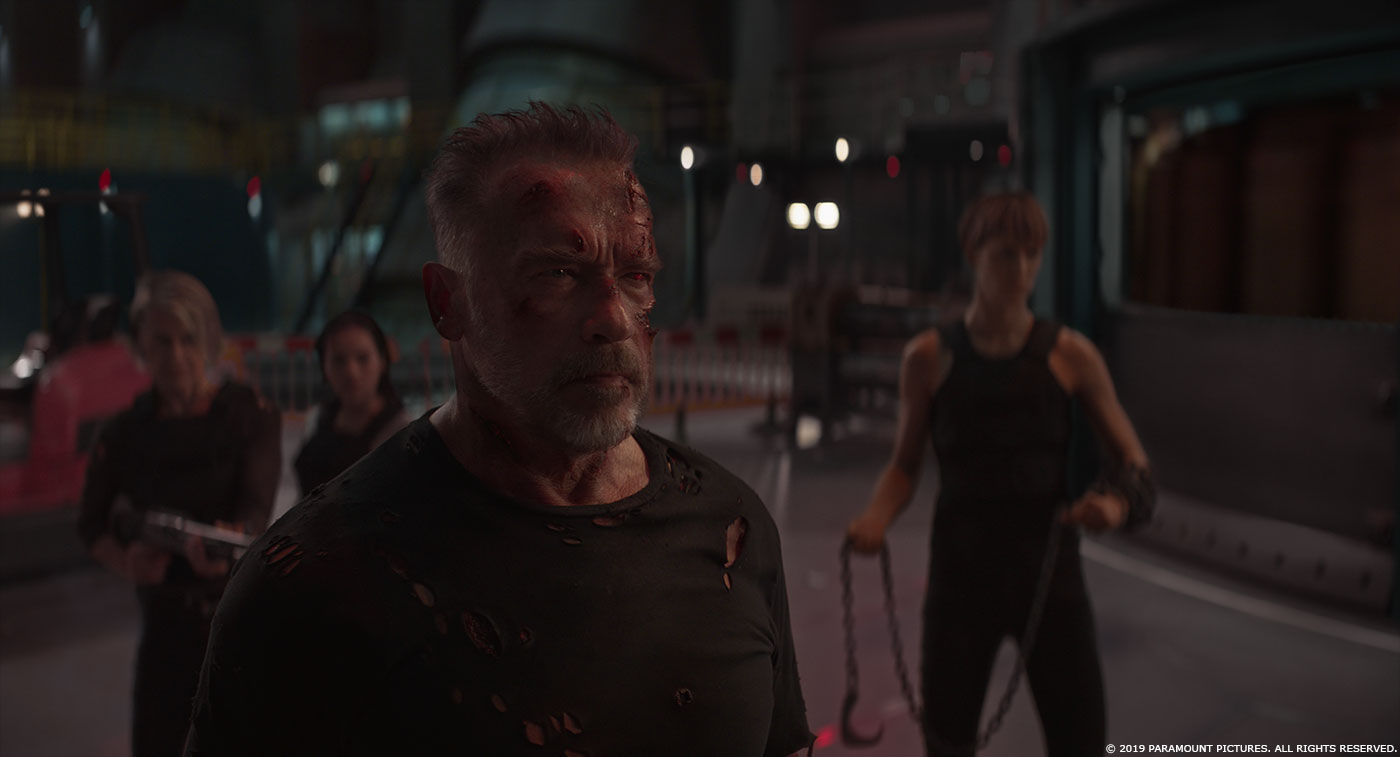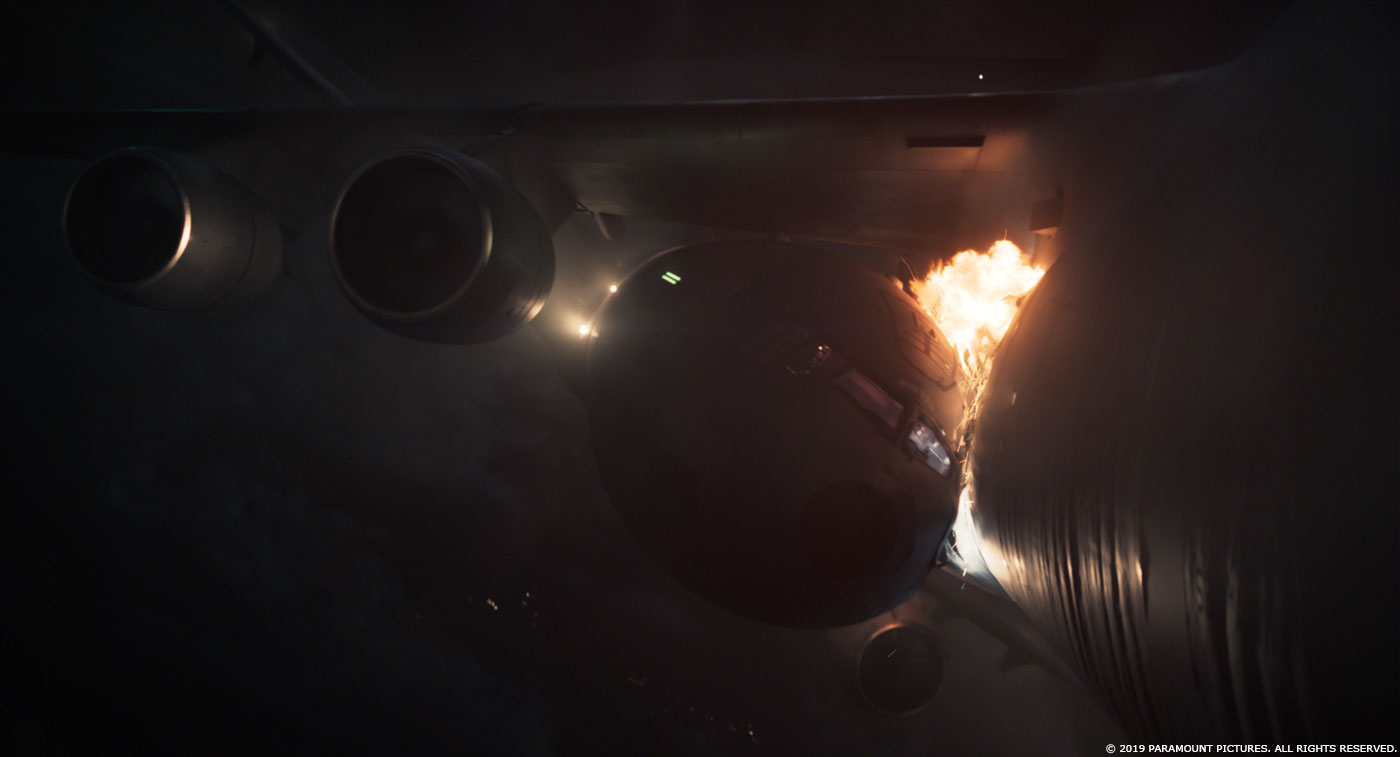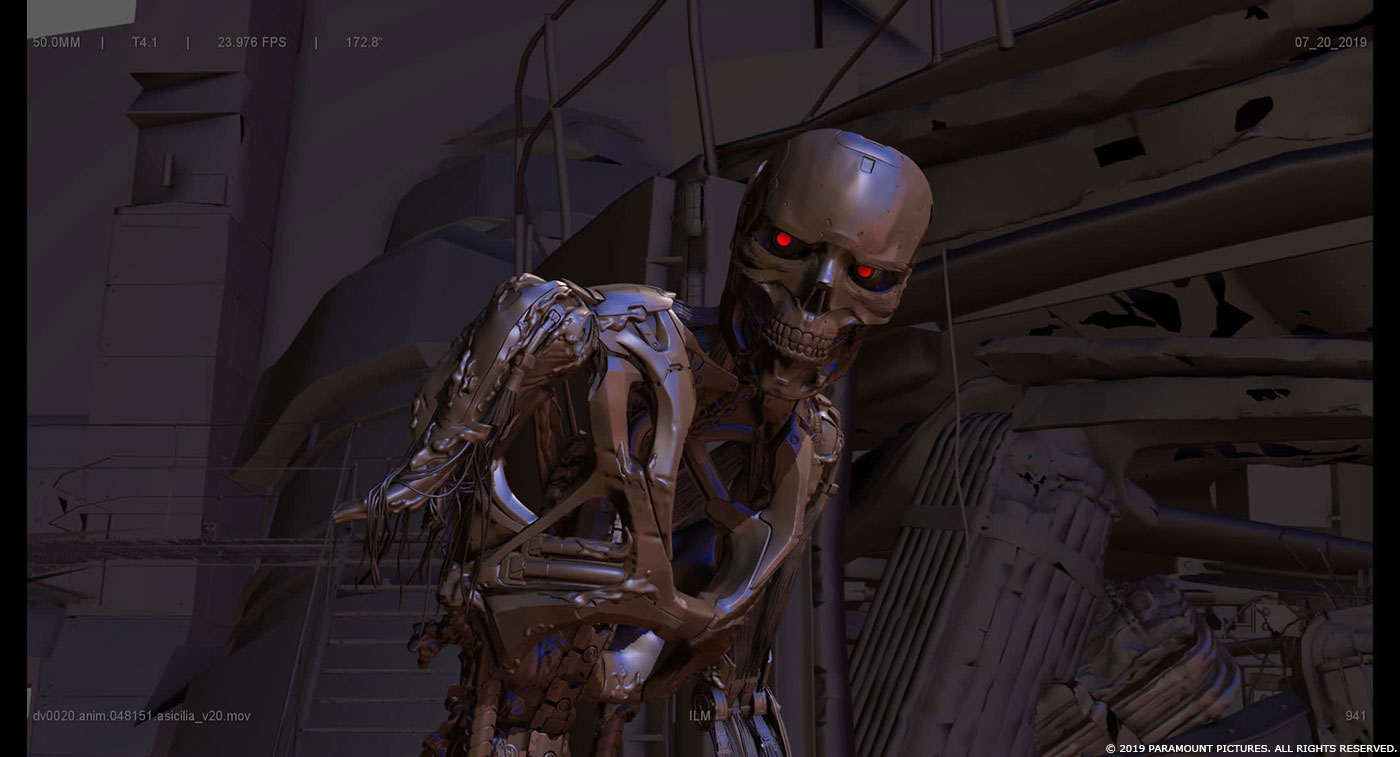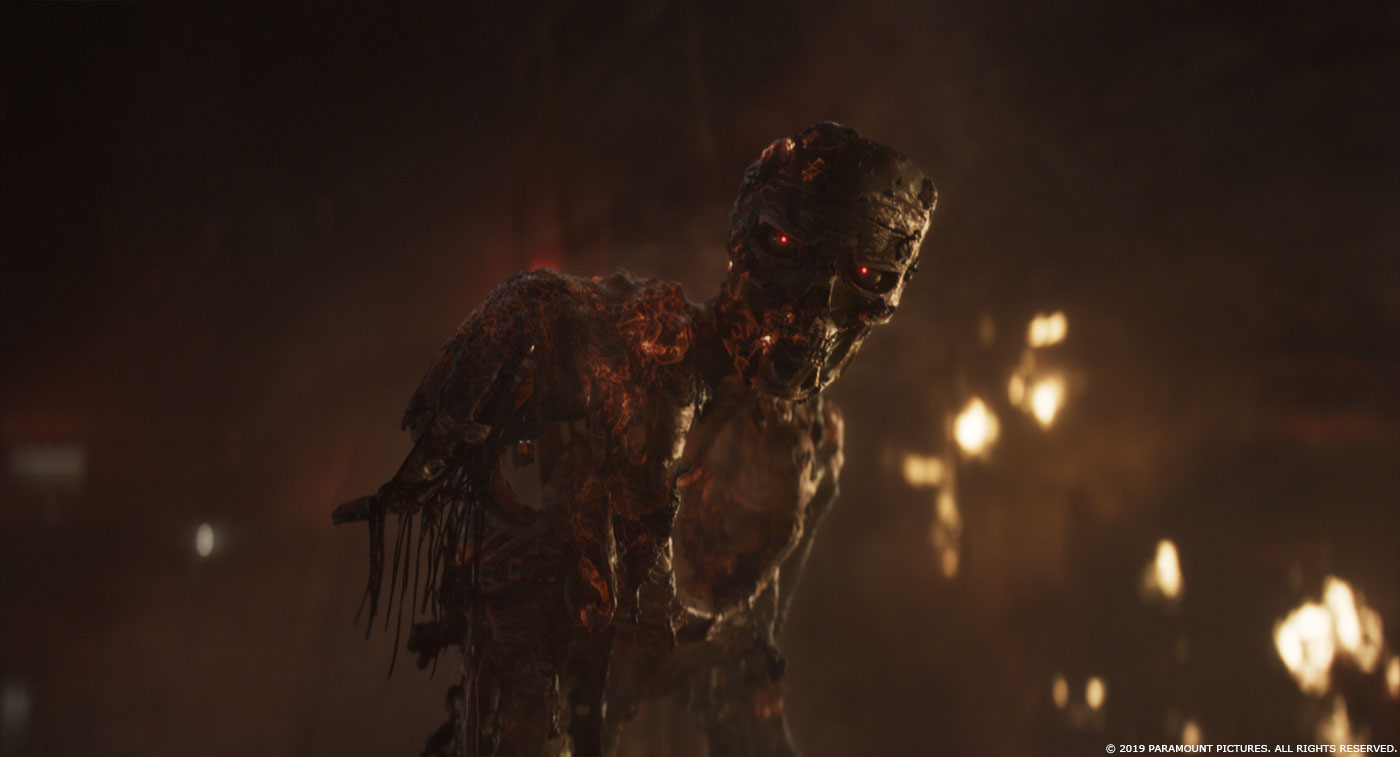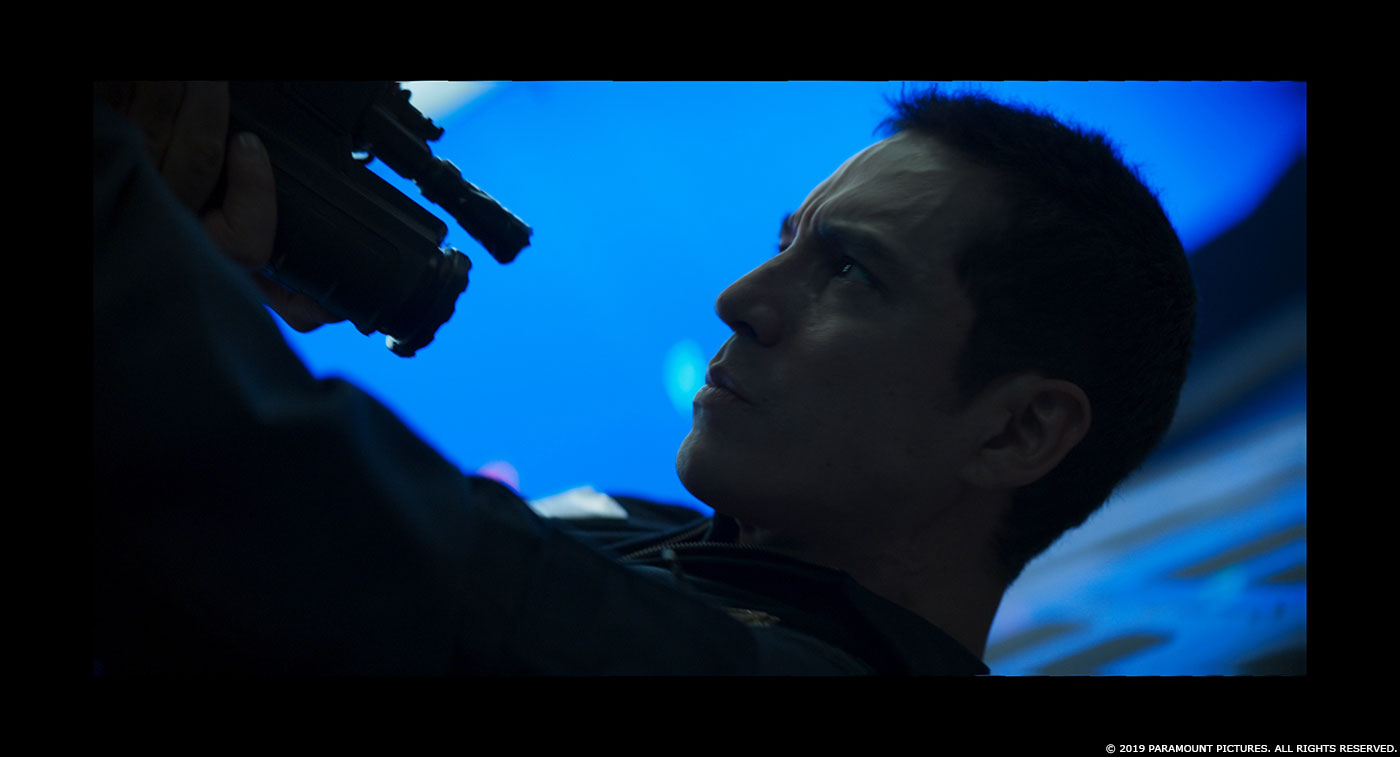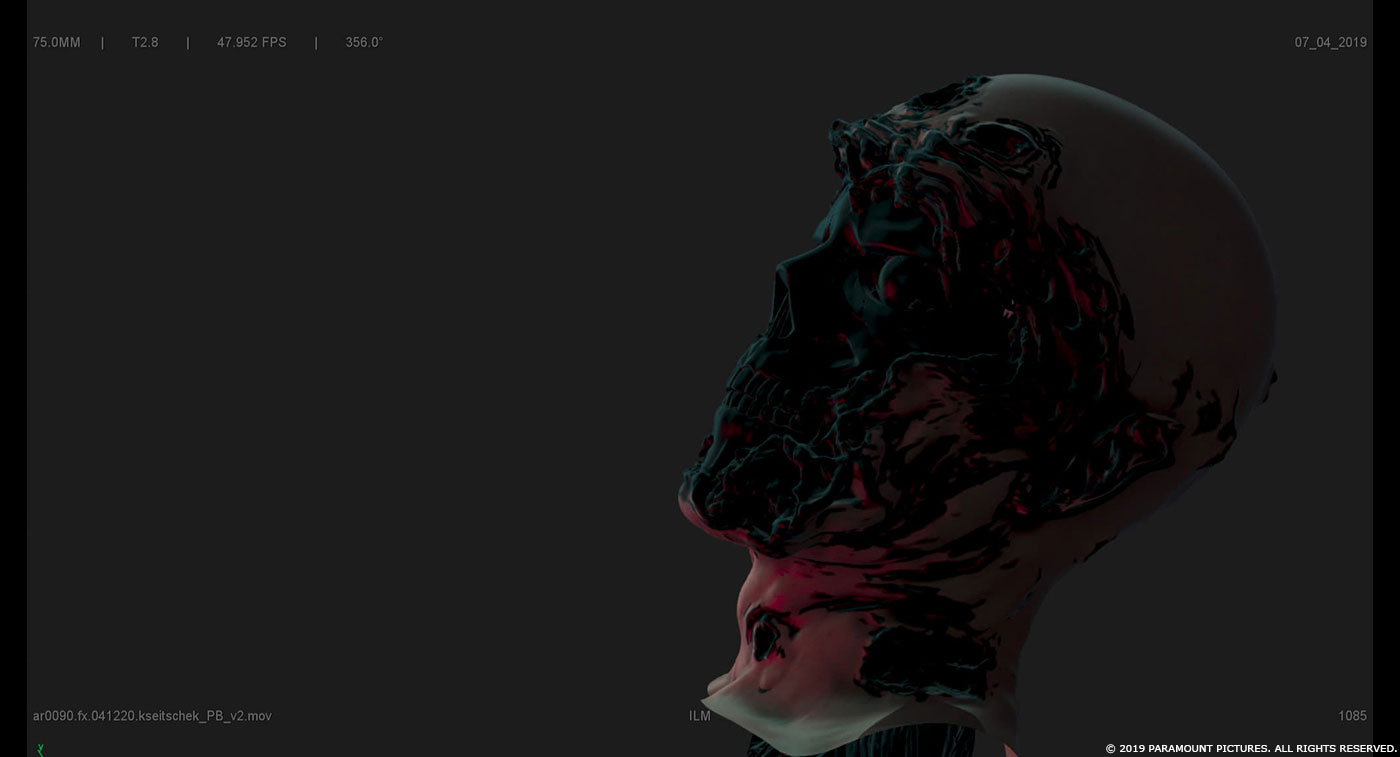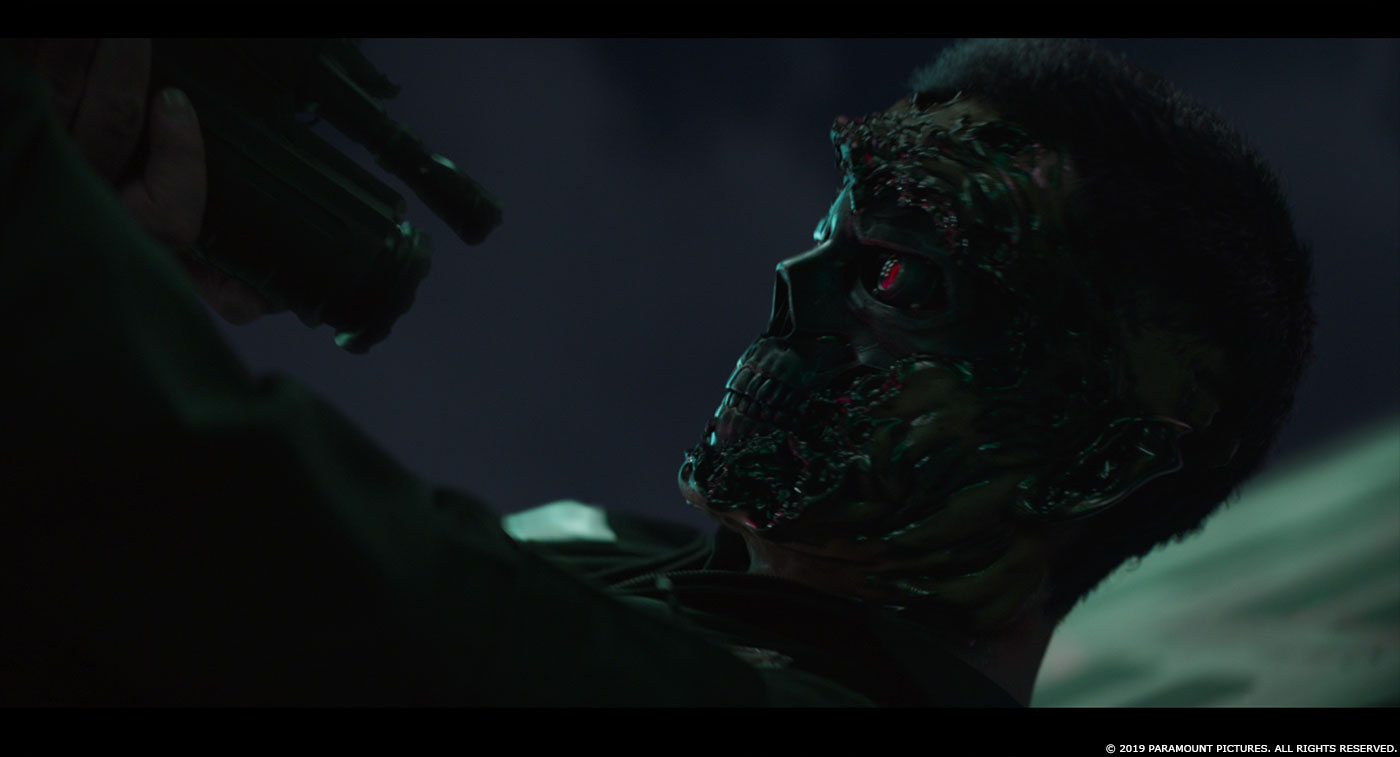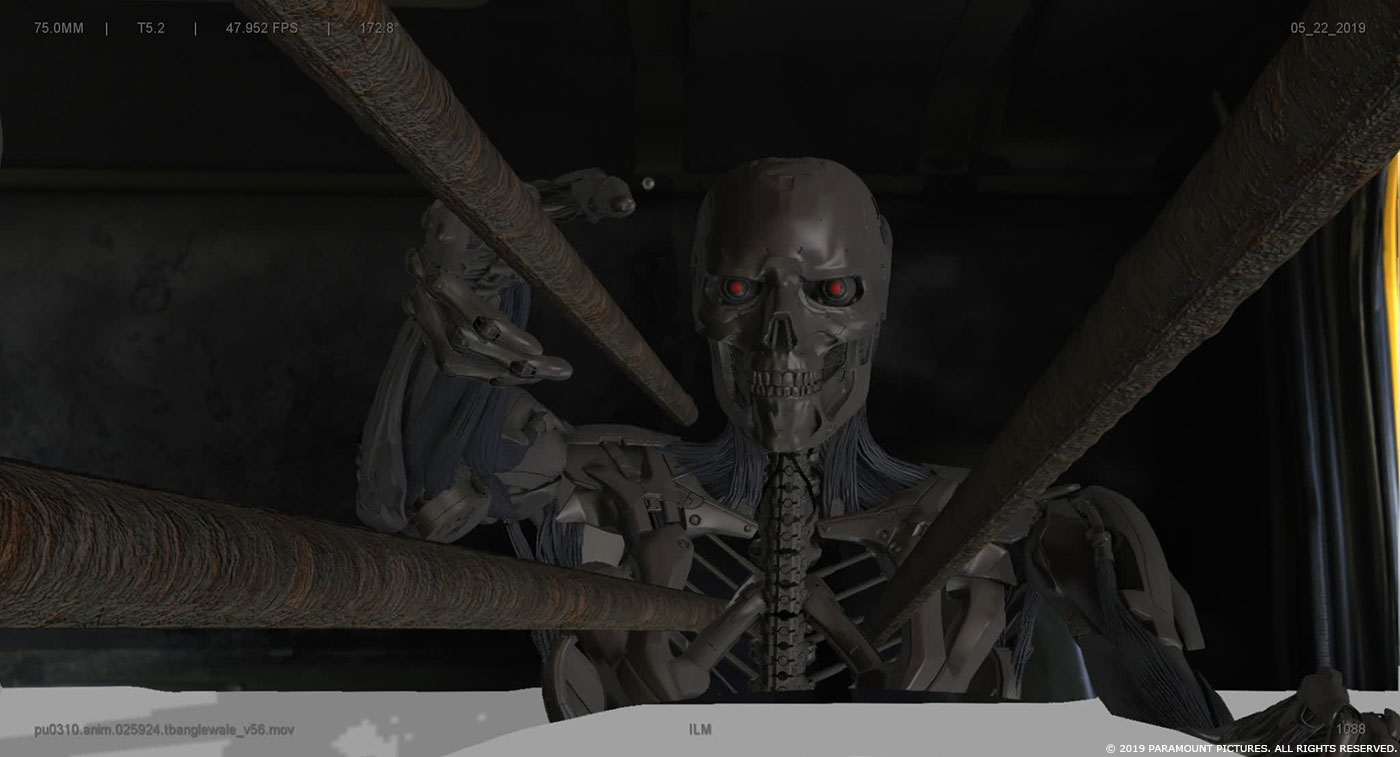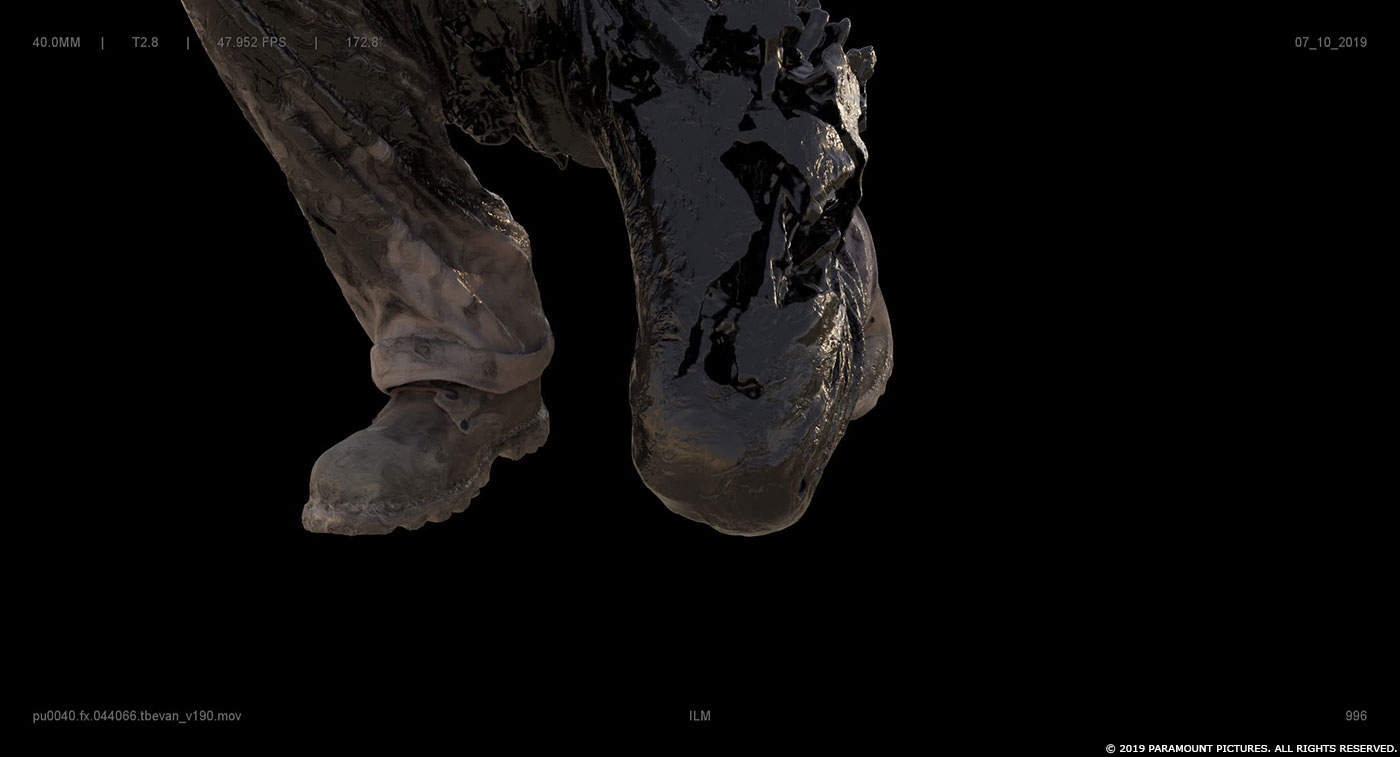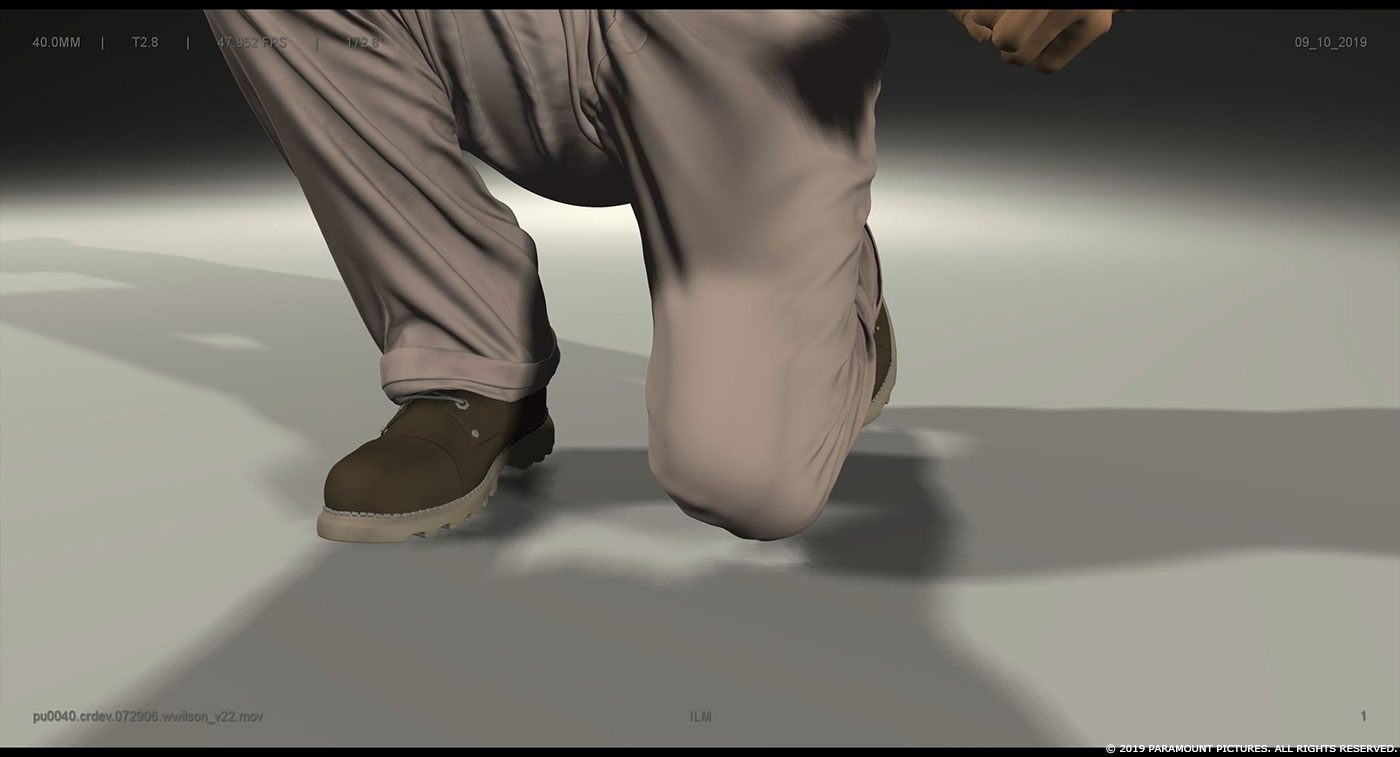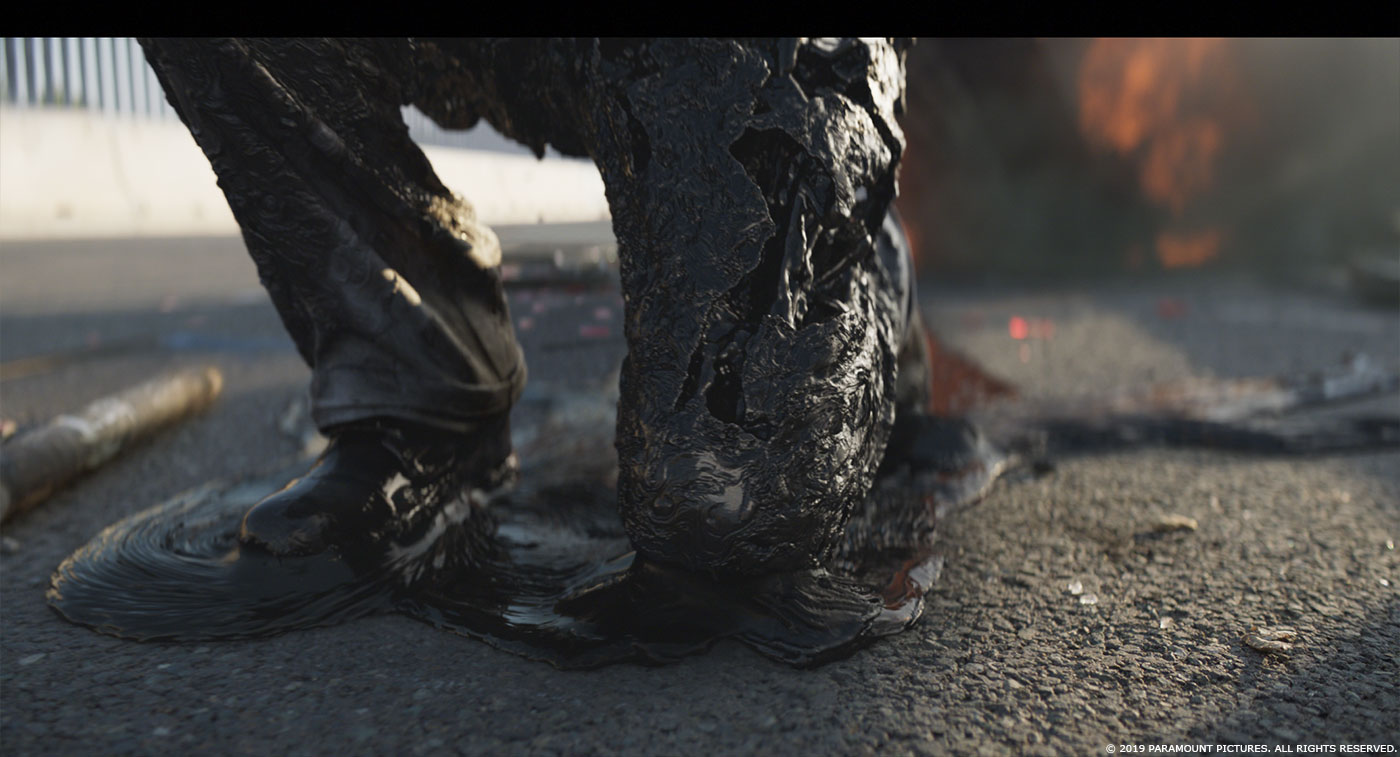At the end of last year, Jeff White explained ILM‘s work on AQUAMAN.
David Seager began his career in visual effects in the late 1990s. He worked in many studios such as Sony Pictures Imageworks, MPC and joined ILM in 2017. He has taken care of the effects for many films such as WATCHMEN, MALEFICENT, FURIOUS SEVEN and ALADDIN.
In 2017, Alex Wang explained DNEG‘s work on THE FATE OF THE FURIOUS. He joins ILM in 2017 and works on JURASSIC WORLD: FALLEN KINGDOM.
Scott Benza is working at ILM for 22 years. He has worked on films such as TRANSFORMERS, THE AVENGERS, KONG: SKULL ISLAND and BUMBLEBEE.
How did you get involved on this show?
Scott Benza // I joined the show a couple of months after post-production started. I would have liked to join during pre-production, but I was completing work on another film and the schedule had some overlap with DARK FATE. I’ve been lucky to find my niche at Industrial Light & Magic, which is working on action-oriented films, so getting to work with Tim Miller on a new TERMINATOR film was very exciting.
David Seager // Following the delivery of ALADDIN, I was asked to supplement the TERMINATOR supervision team for the final stages of post-production. I joined the show that had been running for several months and divided the shot work in half with my colleague Alex Wang. The two of us worked in parallel pushing our respective shots over the finish line.
Alex Wang // I was involved with TERMINATOR: DARK FATE pretty early on with Production VFX Supervisor, Eric Barba. ILM helped establish a lot of the concepts for key sequences and complex FX development for the film. I also joined Eric on set during principal photography.
Jeff White // I joined the show working down in LA with Tim about June of 2019. There was so much going on, it was incredibly helpful to be right there with Tim and the editorial and production teams. I also had the good fortune of working with Jon Carr as the Visual Effects editor who was a lifesaver helping us find plates and keeping up to date on the cut.
What was your feeling to be part of the Terminator franchise?
Scott Benza // I was a senior in high school when T2 came out in 1991. At the time, I was still unsure of what I wanted to pursue as a career. I knew I had a fascination with computer technology and had an artistic eye, but after seeing that movie, I knew exactly what I wanted to do with my life – work at ILM creating computer graphics imagery. With that film being a life-long inspiration, it was a real treat to be a part of the franchise.
David Seager // I was very excited to be able to join TERMINATOR: DARK FATE. I loved the idea of picking up where T2 left off with Sarah and John still on the run in a film with Tim Miller at the helm. It is always a challenge to make a film with a lore that is so adored by the fans. You want to walk a line of paying tribute to the originals but bringing new ideas to the franchise. In the end, it was a dream come true to come to work and work on content that was a big part of my childhood and the films that inspired me to enter a career in visual effects.
Alex Wang // Like many, I hold TERMINATOR 2 as one of my favorite films. Not only has it been an incredible experience to be part of the TERMINATOR franchise, but to work on the film that is essentially the next installment to T2 makes it that much more special.
Jeff White // T2 was one of those films that I can remember specific details about the night I went to see it, it left such an impression. It was such a thrill to be able to work on a film in this franchise.
How was the collaboration with director Tim Miller?
Scott Benza // I worked on BUMBLEBEE last year with director Travis Knight. Travis started out as an artist, worked his way up to owning the animation studio Laika, then turned director. Tim Miller’s career was remarkably similar, starting as an artist, working his way up to owning Blur Studio, then of course into directing films. There are challenges as well as benefits to working with directors who completely understand the animation process. We had the advantage of showing Tim animation in a very early rough state, sometimes only a few poses to talk him through where we were headed with a performance or concept. While it’s great to have a kind of short-hand with a director that comes from an animation background, there is the challenge of nailing exactly what he has in mind. Tim is a stickler for animation performance. It was my job to make sure the team nailed the performances because they were a crucial part of the storytelling and we weren’t going to show him anything unless it was as good as we could make it. From there we could address any notes that Tim felt were key to what he had in mind. I also learned that like me, Tim Miller was inspired to get into visual effects and animation after seeing T2, so it was great having that in common as well.
David Seager // Tim is a very hands-on director when it comes to visual effects given his familiarity and history with computer graphics. This allowed us to have an immediate shorthand with Tim when it came to discussing VFX. The other side to that coin is that Tim has a very refined eye for reviewing VFX, knows what can be achieved, and was constantly pushing for the very best.
Alex Wang // This is my second collaboration with Tim (the first being DEADPOOL), and much like DEADPOOL, it’s always fun, inspiring and challenging working on Tim’s films. He is very familiar with visual effects so he’s not easily impressed because he has seen a lot of CG in his career. Tim enjoys pull back the curtain with VFX and really seeing all the nitty-gritty aspects of early development. It’s nice to know that we could show Tim a rather raw first pass and have him give constructive feedback.
Jeff White // This was my first opportunity working with Tim and I told him how when I was in college I idolized Blur and was way too intimidated to apply. In our first meeting, we started talking 3D software and I’ll say there are not many directors you have have a long conversation about the pros and cons of XSI with. What I found most impressive about working with Tim is that every decision in the film is really thought through and has a reason for being there. The same was true with his feedback on visual effects, he would always frame feedback in the larger context of the story and why the change was important. It was inspirational to the artists working on the shots. Tim pushes for the best and he’s deeply appreciative of the artists’ work knowing how much time and effort they’ve invested in making the work look great. He also happens to be a genuinely nice person and someone you can be excited about working with.
What was his expectations and approach about the visual effects?
Scott Benza // Tim expects his shots to have the highest quality achievable by modern visual effects, and he is relentless. This created a challenge for all the artists, but if you ask most of us, we’d prefer a real challenge over constantly working on average difficulty shots. The end result is often more rewarding. Tim is very direct if something isn’t working for him in a shot, and while some filmmakers will simply leave it to us to figure out how to solve the issue, Tim would offer up suggestions on things we could try, or alternative ideas or approaches he’d be open to in order to get the look he’s after based on his past experience.
Alex Wang // Tim wanted to make sure the mechanics behind the heavy VFX action scenes were believable. As an example in the Air Battle sequence with the KC-10 crashing into the C5 aircraft, though this event may be incredulous, he wanted us to discuss with real pilots for accuracy on what would happen if an incident like this ever took place. Research for Tim is not an afterthought, it starts from the getgo during concept and previz.
How did you organize the work with your VFX Producer?
Jeff White // Lisa Beroud and the entire production team in Los Angeles was incredible. We had many complicated splits on this show with sequences and assets being shared between multiple vendors and they were able to keep it all organized.
How did you split the work amongst the ILM offices?
Scott Benza // The animation team consisted of 50% Vancouver animators, 10% in Singapore, 10% in London, with the remaining 25% plus myself in our San Francisco studio. We have quite the infrastructure set up for collaborating between our different locations. Video conferencing, desktop sharing, and a host of other collaboration tools helped us work as a single unit. While this show was a multi-facility effort, we are lucky that each facility can handle any level of shot complexity. With London and Singapore working opposite hours as us in SF and Vancouver, it was great having shots being worked on in a full 24-hour work cycle.
Were you involved on set during filming? If so where?
Alex Wang // I was involved in some of the location shoot in Spain, but the majority of my time on-set was spent in Budapest.
How did you work with the SFX and stunts teams?
Alex Wang // We worked closely with the stunt and SFX team to make sure we got as much in-camera as possible. For a film like TERMINATOR, everyone understood the importance for stunts and SFX to feel as real as possible, so we always pushed the action to be practical. What we could not get in-camera we made sure we got enough data or a reference plate of what Tim was after. We scanned all the stunt doubles for each main actor in case there was a need for head replacement work.
Which stunt was the most complicated to enhance?
David Seager // In the final battle in the turbine room, we had a beat of action in which the T-800 and Grace were trying to pull the REV-9 into a spinning turbine. The specifics of this action involved Grace putting a chain into the REV-9’s mouth and pulling his head backward. Tim’s vision was to have the REV-9 resisting the action until finally his skull snaps backward ripping his mouth open. Gabriel Luna did a lot of his own stunt work for the REV-9, but for obvious reasons, we could not perform this action in the photography. For this reason, we had to do a very accurate track so that we could do a CG takeover of Gabe’s face. We wanted to keep as much of Gabe’s face from the original photography as possible given the proximity to camera. In the end, we ended up replacing the lower half of Gabe’s face with damage liquid metal and the underlying endoskeleton.
This movie introduces new Terminators, the REV-7 and REV-9. How did you work with the art department for their design?
Alex Wang // When I started on the project there were already preliminary designs of the Rev-9 in progress from the production. Our Art Director, Fred Palacio and concept artist Kouji Tajima took over the designs when we were still shooting the film. Tim wanted to modernize the design of the Rev-9 from the T-800, but at the same time respect the “brand” of Terminator and the T-800 endoskeleton we all know so well. The Rev-9 is much more athletic than the T-800, so to convey this, we designed muscle structures for the Rev-9 made out of thin graphene cables which are stronger than steel.
Jeff White // The ILM Art Department was critical to our shot work as well. Fred and Kouji designed all of the damage to the REV-9 and Gabriel take across the film, it’s a lot! There was a very specific form language to the liquid metal damage inflicted to Gabe as well as when the REV-9 merged or separated from Gabriel. Tim often referred to it like taffy pulling apart.
Can you explain in detail about their creation and their animation?
Scott Benza // Most of the character animation on this film was human and super-human based. This type of animation often takes the most time to make look realistic. For shots where the performance is something an actor or stunt person could perform, we would have a performer stand-in when the scenes were shot and then match-animate those performances as a starting point. If their performance was too complex to capture in-camera we would often shoot motion capture several weeks later either at ILM with myself directing, or in LA at Rouge Studios with Tim directing. For shots where performance capture was not an option, animators would key-frame animate performances based on researching and combining reference materials, or acting out shots themselves as reference.
The REV are shapeshifters. How does that affect your rigging and animation work?
Scott Benza // Animators had a couple approaches for blocking the shapeshifting scenes. Some of our more technical animators used a metaballs setup as a guide for timing and transformations, while others used simple shapes and animated visibility as placeholders for our FX teams to use as a guide.
What kind of references and indications did you receive for the REV and his dark metal look?
Alex Wang // Conceptually the Rev-9 needed to be a very dark metal, but at the same time he needed to look photoreal. Look Development Supervisor Hugo Debat-Burkarth referenced the material properties of titanium, tungsten, and hot-rolled metals. Because we did not want a clear coat finish on the metal, Hugo researched how a dark metal oxidizes.
How did you handle the lighting challenge with this dark metal look?
David Seager // The REV-9’s endoskeleton is made of dark black metal while the liquid metal is more akin to thick black oil or liquid black paint. It was a daily challenge to ensure that the endoskeleton looked like black metal rather than grey metal. We found that it was very easy to drift based upon the lighting conditions. This was typically solved in the comp by adjusting the minimal diffuse component of the endoskeleton renders. For the liquid metal, the challenge is that you rely almost entirely upon specular highlights and reflections. There was virtually no diffuse lighting to help integrate the renders into the photography.
Alex Wang // FX Supervisor Georg Kaltenbrunner used procedural modeling for path generation for the fluid simulation to follow in the forming shot. We experimented with a number of algorithms to accomplish the organic growth Tim was after. We used a variety of tools extensively to reshape and combine volumes. Also when the REV-9 heals after a damaging wound, we modeled shapes and used spatial and temporal blending techniques. Procedural textures and shading networks were used for additional surface displacement details.
The REV-9 can split into two characters. Can you explain in detail?
David Seager // I have always felt that the REV-9’s ability to divide into an endoskeleton similar to the T-800 and a liquid metal clone like the T-1000 was the perfect marriage of the first two films. Tim really embraced the differences between the REV-9 in each form. As a pure liquid metal character the REV-9 was very dynamic, could adjust his appearance, form a variety of bladed weapons, and could easily squirm out of spaces there were physically restrictive. However, the liquid metal version was more susceptible to gunshots and being cleaved into pieces. In contrast, the endoskeleton is the familiar killing machine from the first film, but is limited by his rigid physical form. Additionally, there are points in the film where the two forms separate for tactical purposes so that they can team up on their advisories. In the end, the biggest challenge in working with the REV-9 was in the choreography of the action. Defining when, where, and why the REV-9 takes his various forms.
There is an impressive sequence featuring younger versions of Sarah Connor, John Connor, and the T-800. How did you create this de-aging effect?
Scott Benza // This scene represented the biggest animation challenge of the film. Facial capture was shot during post-production for Linda, Arnold, and Edward acting out the scene with Tim directing. This markerless facial capture data was processed using new technology from our colleagues at Disney Research Studios which gave us a high-fidelity per-frame mesh of each actor’s performance. This dataset was then processed by our face cap rigging supervisor, Abs Jahromi who was able to convert that data onto character rigs animators could edit. Because of the disparity between each actor’s current age and how they appear in the film, a significant amount of animation work was required to get the performances to appear as their younger selves would have. Each shot required a dozen or more reference clips from T2, interviews, or other acting work from each performer’s earlier days and we would constantly cross-reference these performances to examine expressions, skin movement, acting choices, and countless other subtle details. In addition, our research team was able to run several reference clips using image analysis technology to further aid in the process.
Alex Wang // Since we had the ICT scan of current day Linda Hamilton and Arnold Schwarzenegger, it was incredibly useful as a starting point for us to build the younger version of Sarah Connor and T-800. Model Supervisor Marko Chulev and his talented team researched how the face ages through time, so essentially we worked backward from the current day scans to achieve the young models. T2 also became our bible for reference, as we grabbed frames from the film for each character and the asset team meticulously matched our model to the frames. John Connor was a whole different ball game, as not only did we not have the same amount of data we had for Linda and Arnold, the challenges of building a 12-year old boy was next level. We had the same process where we selected frames from T2 to match for John Connor, but this task really came down to the passion, talent, perseverance , and artistry of the asset team.
Jeff White // Even after spending months developing the assets and verifying against T2 footage, our biggest challenge by far was maintaining likeness once we applied the facial capture. There was a complex set of variables to solve in every shot of getting the head the right size on the body double, making sure the iconic hairstyles were carried forward and having to maintain a likeness when a character was doing something that didn’t always have a direct reference. On Sarah, for instance, the facial capture from Linda was incredible for getting the performance Tim was looking for, but that performance involved more happiness and smiling than she did in all of T2. We spent a long time just trying to get the smile to look right and have it still feel like Sarah Connor. The T-800 was great. Once we lined up Arnold’s expression to the poster from T2, it just worked.
How did you enhance the T-800 model since the previous movies?
Alex Wang // We were provided the T-800 model by production from the TERMINATOR GENYSIS film. The model already looked great, so we really didn’t have to alter it much at all.
Which sequence or shot was the most challenging?
Scott Benza // There is a shot in the third act where the human form of REV-9 (actor Gabriel Luna) is sliced in two. Gabriel is completely digital in this shot, it’s in slow motion, close up, and is FX heavy. Several iterations of this shot were done with multiple artists collaborating on different aspects of the shot. Truly a team effort. Our FX team needed early blocking to get started on cutting his body in two. We wanted to make sure what we handed off was going to be close to what would appear in the film, but in order to do that it required pushing the surrounding shots further along as well. Once we were all happy with the blocking, FX started their work, and animators began the tough task of animating Gabriel’s facial performance. Director Tim Miller didn’t want Gabriel expressing too much rage for a Terminator, but we needed some amount of rage since we all agreed this would be a pretty grim moment for him. Over the course of a few weeks, we explored many paths for Gabriel’s performance in this shot – different parts of his body leading the action, different expressions, with blinks and without. We got it about 90% working in time for the release of the second trailer and almost everyone felt like it was working, but we all knew it needed to be in that 98-100% working range. VFX Supervisor Jeff White had the idea to fly down to LA to meet with Gabriel Luna for the sole purpose of filming reference of him acting this one performance out for us. Jeff’s idea worked. Having specific performance reference for this shot took all the guesswork out of what was missing and we were able to tighten up the mechanics, facial animation, and physicality of the shot to take it to where it needed to be.
Jeff White // What was great about TERMINATOR: DARK FATE is that each sequence came with a huge variety of different visual effects challenges to solve. How many films do you get to de-age famous actors, create an aerial fight with planes colliding, an underwater scene with tank and dry for wet work and a huge fight involving a liquid metal villain to end the film? Almost every shot required multiple departments and tremendous coordination to pull it all together.
Is there something specific that gives you some really sleepless nights?
Scott Benza // There is a very delicate balance when animating exaggerated human motion, or super strength look believable. We are so familiar with human movement, physicality, and how physics affects things like jumping and landing. We know what is survivable for a human, and have a good feel for what an acceptable amount of acceleration and deceleration is for a person. When we see something we recognize as human do something that defies physics, something in your brain tells you it’s incorrect or not realistic. A tough challenge on this film was making the superhuman moments with REV9 be as believable as possible, while still selling the idea that he is a cyborg assassin with super strength and abilities. One way we achieved this were the moments where REV9 stands up from being on the ground. Tim had this idea of REV9 using his super strength to right himself instead of using traditional mechanics where humans typically reposition themselves to put most of their weight over their legs before standing. Instead, he had REV9 do these super yoga-inspired rises a couple times in the film where the strength is showcased and you don’t question the believability of the movement. For super jumps and landings we tried to sell as much of a big anticipation as possible, and do as big of a compression on landings so all that energy had somewhere to go instead of coming to a dead stop suddenly.
What is your favorite shot or sequence?
David Seager // I was fortunate to be able to supervise the final battle in act three that was entitled Dani’s Victory. This is the portion of the film after the turbine explodes and Dani asserts herself in the battle versus the REV-9. Firstly, I liked the look of this smokey aftermath of the explosion with fires, smoke, sparks, and electrical explosions. Additionally, we built a custom variation of the REV-9 endoskeleton for this sequence with a significant amount of damage from the explosion. There are also some very big shots of the REV-9 emerging from the turbine with the liquid metal flowing off of him in a similar fashion to lava or liquid metal. These proved to be very challenging FX simulations, and I think the final result looks great.
Alex Wang // When I saw the previz for the Terminators battling underwater I fell in love with it. Who doesn’t like two terminators fighting underwater?!? I think the sequence was short and sweet, but kept the suspense of not knowing which Terminator was going to win this fight. Tim wanted the sequence to be dark and eerie which ended up looking great.
What is your best memory of this show?
Scott Benza // Meeting Arnold Schwarzenegger and telling him how much T2 inspired my career was a very memorable moment.
Jeff White // Meeting Arnold Schwarzenegger and having him tell us our mouth shape for his digital doppelganger was slightly off. Who would know better!
How long have you worked on this show?
David Seager // I joined TERMINATOR for the last five months of production to help finish the show.
Alex Wang // I was on the project for 1 year and 4 months.
What’s the VFX shots count?
Jeff White // ILM did 668 shots for TERMINATOR: DARK FATE.
A big thanks for your time.
WANT TO KNOW MORE?
Industrial Light & Magic: Dedicated page about TERMINATOR: DARK FATE on ILM website.
Eric Barba: My interview of Eric Barba, Overall VFX Supervisor on TERMINATOR: DARK FATE.
© Vincent Frei – The Art of VFX – 2020

